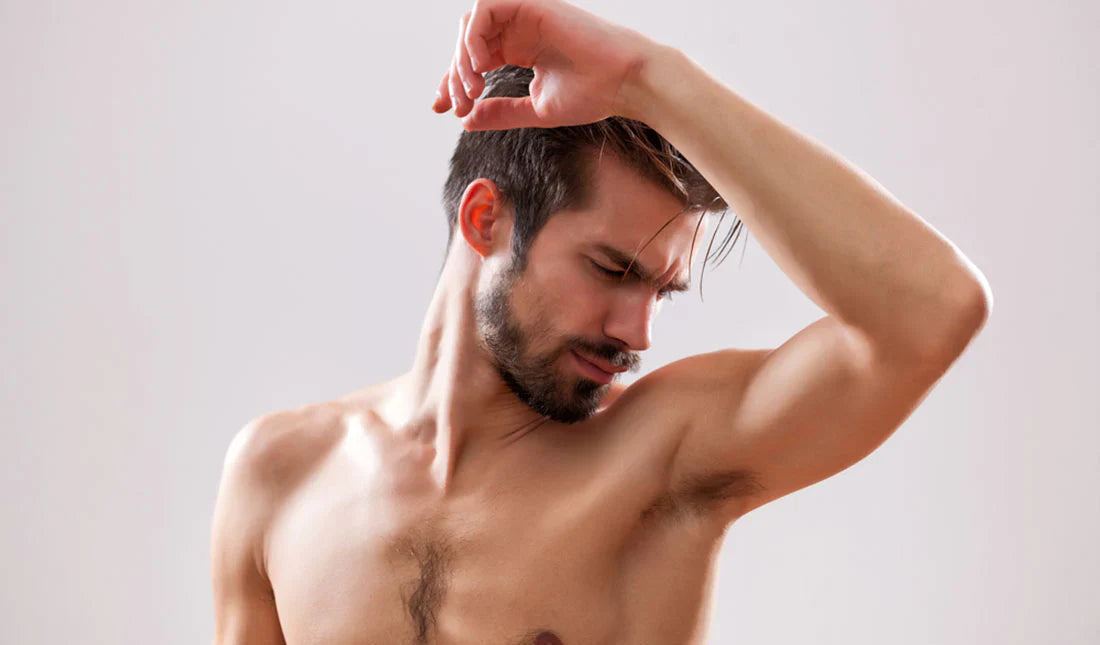4 Things Men Can Do To Be More Confident (Scientific Strategies)
Are you looking for ways to boost your confidence and feel better about yourself? Are you trying to build up the courage to ask that woman out on a date? Regardless of your situation, we did all the research, broke it down for you, and included action steps you could start implementing today!
Before we get started, we need to break down a myth: Confidence is just one of those things that you either "have" or "don't have." This myth is not true at all. Next, we'll break down the ways you can achieve confidence like any other skill.
Your Body Language Matters and Your Looks
Do you know that saying we hear all the time? When you look good, you feel good. It's true. After working in the men's grooming industry for nearly ten years, we've noticed that when you look good, you feel good. It's as simple as it gets. You get this spark of confidence after getting a fresh haircut at the barbershop because, internally, you feel good and appreciate yourself more because you're taking care of yourself.
If you want to get dates, more business deals, or influence people, you have to prep your confidence both inside and out. So often, we're focused only on the words we say in emails, interviews, or conversations. However, most of our communication is nonverbal. How we say something matters just as much as saying it.
Did you know that nonverbal communication makes up a minimum of 60 percent of our communication? Think about it. If you only focus on your words, you're using only 40 percent of your communication ability.
Therefore, we have to get into the habit of portraying confidence with both our verbal and nonverbal communication.
When you walk into a family gathering, office, or restaurant, do you look like a winner?
It may seem like a strange question, but research from the University of British Columbia clarifies: We innately get bigger in our bodies when we feel prideful but get smaller when we feel defeated or ashamed. These researchers observed sighted, blind and congenitally blind (blind since birth) athletes in various Olympic and Paralympic Games events. The research found that expressions of pride (when an athlete won an event) and defeat (when an athlete lost an event) were the same across all three groups. This study proves that our nonverbal responses to pride and defeat aren't expressions we learn from seeing others win or lose. Instead, they are responses that are coded within us.
To look and feel confident, your body language must show it.
PROtip—the easiest way to look like a winner is to claim yourself. Own your body and own the space around you by standing or sitting tall.
Relax your shoulders and open up your chest. Expansive postures will show others that you're confident and sure of yourself. However, be wary of low power postures, such as crossing your arms or turtling your shoulders to your ears, as this may signal defeat.
Still not convinced? Research published in Health Psychology found that participants in a mock interview who sat up straight reported a better mood and higher self-esteem than their slouched counterparts.
From the study:
The upright participants reported feeling more enthusiastic, excited, and strong, while the slumped participants reported feeling more fearful, hostile, nervous, quiet, still, passive, dull, sleepy, and sluggish.
Next, the eyes have it! Confident people know the power of eye-gazing. To increase your confidence, be sure to look people in the eye as you are speaking AND as they are saying. Too often, we look away, check our phone or scope out the rest of the room. It's not only rude but low confidence.
Finally, engage in fronting. Fronting is when you aim your torso and toes toward the person you are speaking to. Nonverbally, this is a sign of respect. When you do this, you look incredibly focused, confident, put together and charismatic. Be sure always to keep your toes and torso aimed at the person you are speaking with.
Action Step: Practice claiming space, making eye contact and fronting in your following conversation with someone today.
Speak Confidently
Now that we've learned how to look more confident with our body language and looks, let's look more into the power of our voices.
While reading this part, it's essential to keep a question in mind: is your voice helping or hurting your confidence?
The best way to figure this out is to look back at your previous conversation over the phone. Did you feel confident in your first response?
Your voice must project inner confidence. We usually make our first impression of someone after the first "hello" when answering the phone.
PROtip—record yourself saying hello in 6 different ways:
- Normal Hello (This is the control)
- Happy Hello (Thinking of something that made them happy and holding a Happiness Microexpression)
- Sad Hello (Thinking of something that made them unhappy and having a Sadness Microexpression)
- Angry Hello (Thinking of something that made them angry and holding an Angry Microexpression)
- Power Posing (While adopting a Power Pose)
- Normal Hello (One more control once they were warmed up)
After the recordings are done, ask random people around you which "hello" they liked most or didn't like. You'll start to notice that people can "hear" your mood from that simple recording. Give this experiment a try! You may learn lots from it.
Action Step: Your mood affects your voice. We like hearing happy spirits, and we don't like hearing irritable moods. So reserve your phone calls for when you're in a quiet place, you're calm, and you've settled. Resist the urge to answer when you're stuck in traffic or having a bad day.
How to be Confident with Social Anxiety
Social anxiety is a topic we go deep into at OBRO as it's something important that needs to be addressed. In today's day and age, with all the technology we have, we're losing out on the human connection we share; instead, we're using screens to interact with one another. So let's take a step back and take a look at the bigger picture.
If you get stressed out or pull your hair out in social situations, you may suffer from social anxiety.
Social anxiety is when you feel nervous, tense and uncomfortable in social situations because you feel like people are judging you. Almost everyone experienced this at some point in their life, but some have it more than others, and it's essential to learn how to deal with it. Social anxiety can suppress our inner confidence and makes it impossible for us to be social in an authentic way.
The good news is there is a way to overcome this fear with Cognitive Behavioural Therapy (CBT).
CBT is recognized as one of the most effective treatment options for social anxiety. It's endorsed by leading mental health organizations, including the U.S. National Institute of Mental Health.
CBT is a set of activities proven to reduce your anxiety through repeated practice. It consists of two main parts: cognitive therapy and behavioural therapy.
If you're suffering from social anxiety, to the point you avoid social situations, get some help to overcome this obstacle in your life. It can be one of the obstacles that may be blocking your inner confidence in social situations.
Action Step: Take note of how you operate in social settings. Do you see areas you could improve?
How to Walk Confidently
Did you know that your walk can project how confident you are? Bio Motion Lab analyzes and synthesizes biological motion patterns (a fancy way of saying they study walking and movement for patterns).From their website: "Biological motion contains information about several different emotions, intentions, personality traits and biological attributes of the agent. The human visual system is highly sensitive to biological motion and capable of extracting this information from it. We investigate the question of how such information is encoded in biological motion patterns and how it can be retrieved from it. We developed a framework that transforms biological motion into a linearized representation, which enables us to apply linear methods from statistics and pattern recognition to its analysis."
They use several variants to show different kinds of walks, including:
- Gender
- Weight
- Nervousness
- Happiness
A nervous walker moves faster, with the arms held tightly at the sides. A relaxed walker moves more slowly, with the arms loose by the sides. What's your typical walk look like?
Action Step: Play the walking demo from Bio Motion Lab to see the project in action.
Conclusion
It's time to take action and start owning your personal growth. With these action steps we're confident you'll be able to make an improvement in your life as soon as you start! Don't just take our word for it, give it a try and see how it works for you.





